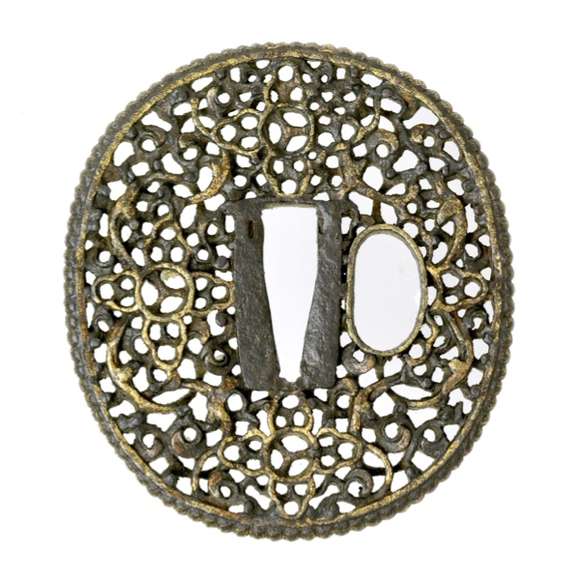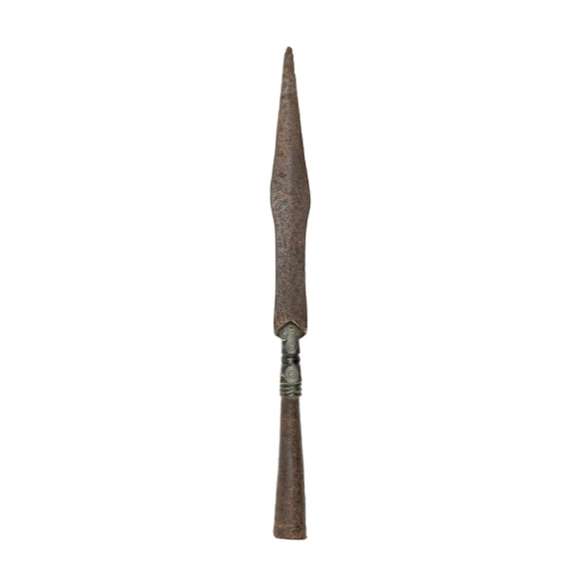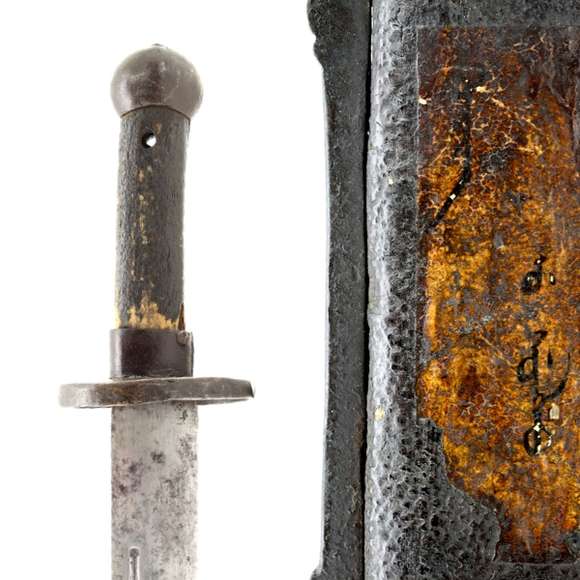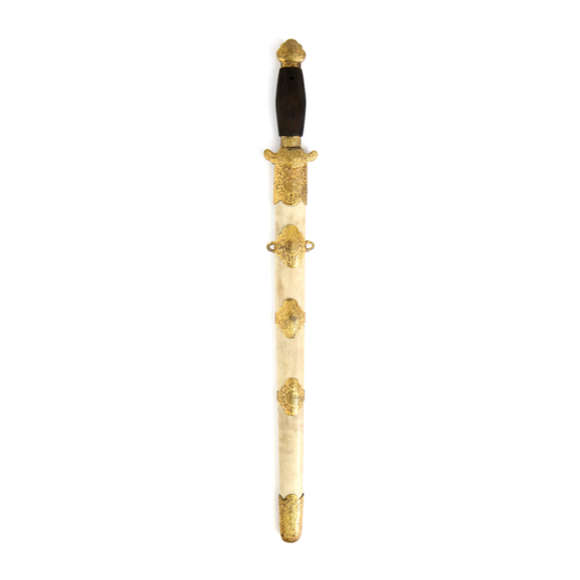Language: Mandarin Chinese
Source: Classical literature
Description
Sǔn (榫) literally means "tenon", it's also the word used for a sword tang.1
The Chinese sword tang is typically peened over at the pommel, so the owner may never see it. For this reason, Chinese tangs are rarely marked and usually left with a relatively coarse finish.
 Tang on a Ming dynasy saber blade.
Tang on a Ming dynasy saber blade.
 Rare example of a marked tang on a 17th century Manchu saber.
Rare example of a marked tang on a 17th century Manchu saber.
The marking probably had to do with the production process.
Also see
Alternatively, dīngdāo gēntiě (釘刀根鐵) is used for tang.2
For a complete overview, see: A Chinese saber glossary.
References
1. Qinding Gongbu Junqi Zeli (欽定工部軍器則例) or "Imperial regulations and precedents on weapons and military equipment by the Ministry of Public Works", 1813. Chapter 36.
2. Wuti Qingwen Jian (五體清文鑑) or "Five languages compendium"
A Qing imperial dictionary in Manchu, Mongolian, Uighur, Tibetan and Chinese of 1766. Published under the Qianlong emperor.






